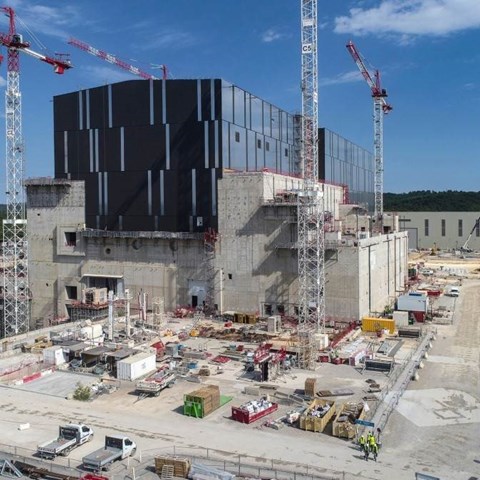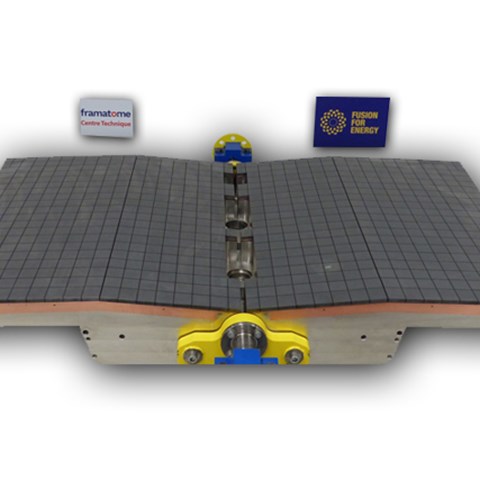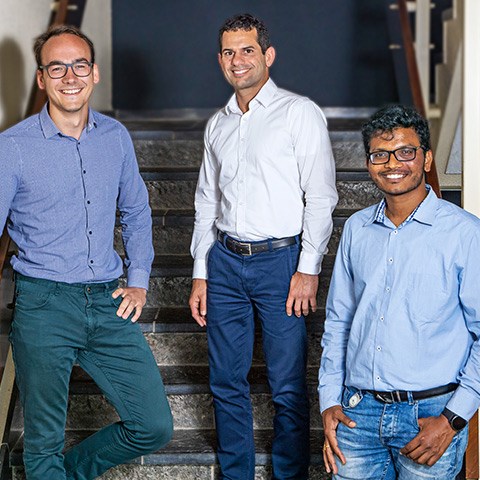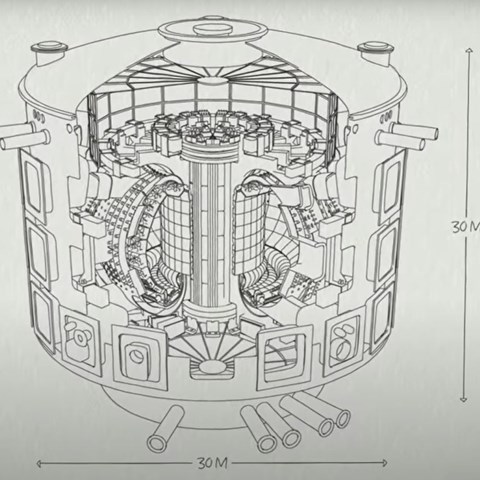Reference Case ITER
Qualification of First Wall Panels for ITER
02 July 2020
Irradiation of ITER First Wall Assemblies with excellent temperature control
Full sub scale component irradiation at ITER representative temperature
First high heat flux tests on neutron irradiated first wall component for ITER
In 2016 NRG concluded the first part on the Qualification of the ITER First Wall Assemblies, the second part is conducted at the premises of project partner Forsungzentrum Juelich in 2018.
History on nuclear fusion R&D projects at NRG
Alongside the exploitation of the High Flux Reactor in Petten, since 1960 a long term R&D programme on fusion material research was conducted. In this programme material qualification tests of Reduced Acivating Ferritic Material for ITER were performed and the European selection of candidate fusion fuel material for ITER was made. In addition many other fusion materials for various applications in fusion reactors were irradiated under ITER and fusion reactor representative irradiation conditions and subjected to extensive post irradiation research campaigns.
In 2005 decision was made to build ITER in the South of France and the first agreement was made to develop a joint undertaking for European Fusion Energy research and development for ITER which led to the resurrection of Fusion for Energy. This led to major reorganisations of fusion research funding structures of EURATOM and the decision to organize the EU long term fusion research in the European Joint Programme EUROFUSION from 2014 onwards. The Dutch subsidy from the ministry of economic affairs for long term fusion research stopped in 2016.
With the primary focus towards the building of ITER, the extensive network of fusion partnerships and the expertise and quality of NRG irradiations and measurements, resulted in 2012 in a contract research assignment from ITER for the nuclear qualification of first wall panels.

ITER: an introduction
ITER is an international collaboration project with seven partners EU, China, Korea, Japan, US, Russia and India. The objective of ITER is to generate a net overall energy production rate from a fusion plasma. It will be the largest tokamak ever build until to date.
Unlike the process in a nuclear reactor where energy is generated from the nuclear fission of Uranium atoms, energy in a hot plasma is generated from the fusion of two hydrogen atoms, emitting a helium atom and a neutron. This process requires extreme high temperature of the plasma (above 1 million deg. C). Fortunately the plasma can be controlled with magnetic field coils surrounding the ITER vessel.
The neutron emitted from the hot plasma will be shielded by the ITER First wall, this consists of a layer of Beryllium joined to a Copper alloy which functions as a heat sink material. ITER will not generate electricity to the grid, but will be the first tokamak in the world to prove that that it fusion power for electricity production is feasible.
Credit © ITER Organization, http://www.iter.org/
The First Wall component Irradiation
Together with the ITER First Wall team, the Chinese and Russian material suppliers and project partner Forsungszentrum Juelich, the first nuclear material qualification test was conducted. The first wall components were irradiated to ITER representative neutron fluence and temperature. The objective was to investigate the joint of the beryllium clad and the copper alloy heat sink material and to evaluate changes in thermal profiles of the component during High heat flux testing in the JUDITH- 1 facility at FZJ. The following activities are undertaken in each phase of the program:
- Delivery of the sub scale ITER FW panel from the Chinese institute xxx and the Russian institute yyy
- Engineering of irradiation capsule in which the components are loaded in the High Flux Reactor
- Irradiation of ITER FW components in the HFR
- Before and after irradiation High Heat flux testing with ITER representative heat loads using the electron beam in the JUDITH- 1 facility in FZ Juelich
- Nuclear transport of irradiated components to FZ Juelich


Accurate irradiation data for ITER
Together with the ITER First Wall team, the Chinese and Russian material suppliers and project partner Forsungszentrum Juelich, the first nuclear material qualification test was conducted. The first wall components were irradiated to ITER representative neutron fluence and temperature. The objective was to investigate the joint of the beryllium clad and the copper alloy heat sink material and to evaluate changes in thermal profiles of the component during High heat flux testing in the JUDITH- 1 facility at FZJ. The following activities are undertaken in each phase of the program:
- Delivery of the sub scale ITER FW panel from the Chinese institute xxx and the Russian institute yyy
- Engineering of irradiation capsule in which the components are loaded in the High Flux Reactor
- Irradiation of ITER FW components in the HFR
- Before and after irradiation High Heat flux testing with ITER representative heat loads using the electron beam in the JUDITH- 1 facility in FZ Juelich
- Nuclear transport of irradiated components to FZ Juelich
Results and benefit
Together with the ITER First Wall team, the Chinese and Russian material suppliers and project partner Forsungszentrum Juelich, the first nuclear material qualification test was conducted. The first wall components were irradiated to ITER representative neutron fluence and temperature. The objective was to investigate the joint of the beryllium clad and the copper alloy heat sink material and to evaluate changes in thermal profiles of the component during High heat flux testing in the JUDITH- 1 facility at FZJ. The following activities are undertaken in each phase of the program:
- Delivery of the sub scale ITER FW panel from the Chinese institute xxx and the Russian institute yyy
- Engineering of irradiation capsule in which the components are loaded in the High Flux Reactor
- Irradiation of ITER FW components in the HFR
- Before and after irradiation High Heat flux testing with ITER representative heat loads using the electron beam in the JUDITH- 1 facility in FZ Juelich
- Nuclear transport of irradiated components to FZ Juelich

More information?
We are happy to tell you more. Tell us your question and we will contact you.
Team Irradiations



